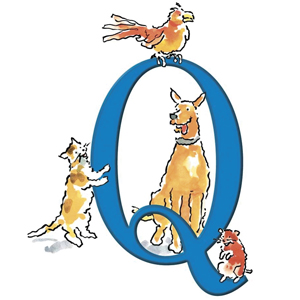People are often surprised to learn that our pets have many of the same diseases we do. Annual physical exams and routine blood work can be helpful in identifying these diseases early.
Diabetes mellitus occurs when there is too much sugar, known as glucose, in the blood stream. Insulin is needed to help absorb the glucose from the blood stream so it can be utilized by the body. A diabetic does not produce enough insulin. This is often referred to as type 2 diabetes in people. Like people with diabetes, cats will often drink more water and urinate more frequently. Often there is weight loss. Dramatic glucose levels in the blood and often in the urine, too, are the primary ways to make a diagnosis of diabetes. Similar to people, diet and exercise play a big role in treatment of diabetes. However, insulin injections are often needed for good glucose control. Progress in diabetic cats is often monitored by glucose curves performed in a veterinary hospital. Home glucose monitoring can be performed if the patient and owner are willing. If managed successfully, most cats can live for many years with diabetes without any further complications.
Hyperthyroid disease is quite common in the older cat. Most often, hyperthyroidism is caused by a benign growth in the thyroid gland causing an overproduction of T4. The hallmark of this diseases is weight loss despite an excellent appetite. Many hyperthyroid cats demand attention and/or food and may have intermittent gastrointestinal upset. Often the veterinarian is able to examine an enlarged thyroid gland during the physical exam. Blood work illustrating an elevated T4 is the basis for diagnosis. There are three well-reviewed treatment options for hyperthyroid disease in the cat. Surgical treatment involves removing the abnormal thyroid tissue. Because many hyperthyroid cats are older, there are many precautions to take before performing surgery and there are significant risks during surgery, too. Radiotherapy with iodine 131 is generally considered the safest and most effective method for treating hyperthyroid disease. There are many advantages to this procedure, but two major disadvantages for many pet owners are cost and convenience. Lastly, many hyperthyroid cats are medically managed. The medication blocks the production of T4 and T3. Although medicating a cat can be difficult, transdermal medications which are rubbed on the ear flap, have recently been quite successful. Occasionally there is a cat that does not respond well to traditional therapies, and radiotherapy is cost prohibitive. For these cats, there is a newer prescription diet from your veterinarian to help control thyroid disease. It is important to treat hyperthyroid disease as it can lead to further complications.
The kidneys have many functions beyond just making urine. With age, the kidneys may not be able to perform a function adequately. This is called kidney failure. Unfortunately, this is a very common disease in the aging cat. Even more unfortunate is that in many cases by the time the diagnosis of kidney failure is made, the cat is quite sick. Often these cats have a decrease in appetite and an increase in thirst. They are urinating frequently and may not be using the litter box. Diet, medications, and fluid therapy can slow the progression of kidney failure and help control any consequences of the disease.
Cats are unique animals and are very good at hiding illness. Consequently, small changes are a big deal with cats. Measuring food and water and identifying any changes in consumption can be helpful. Annual exams and weight checks aid early detection of health issues. The earlier a problem is detected, the better it can be managed.




